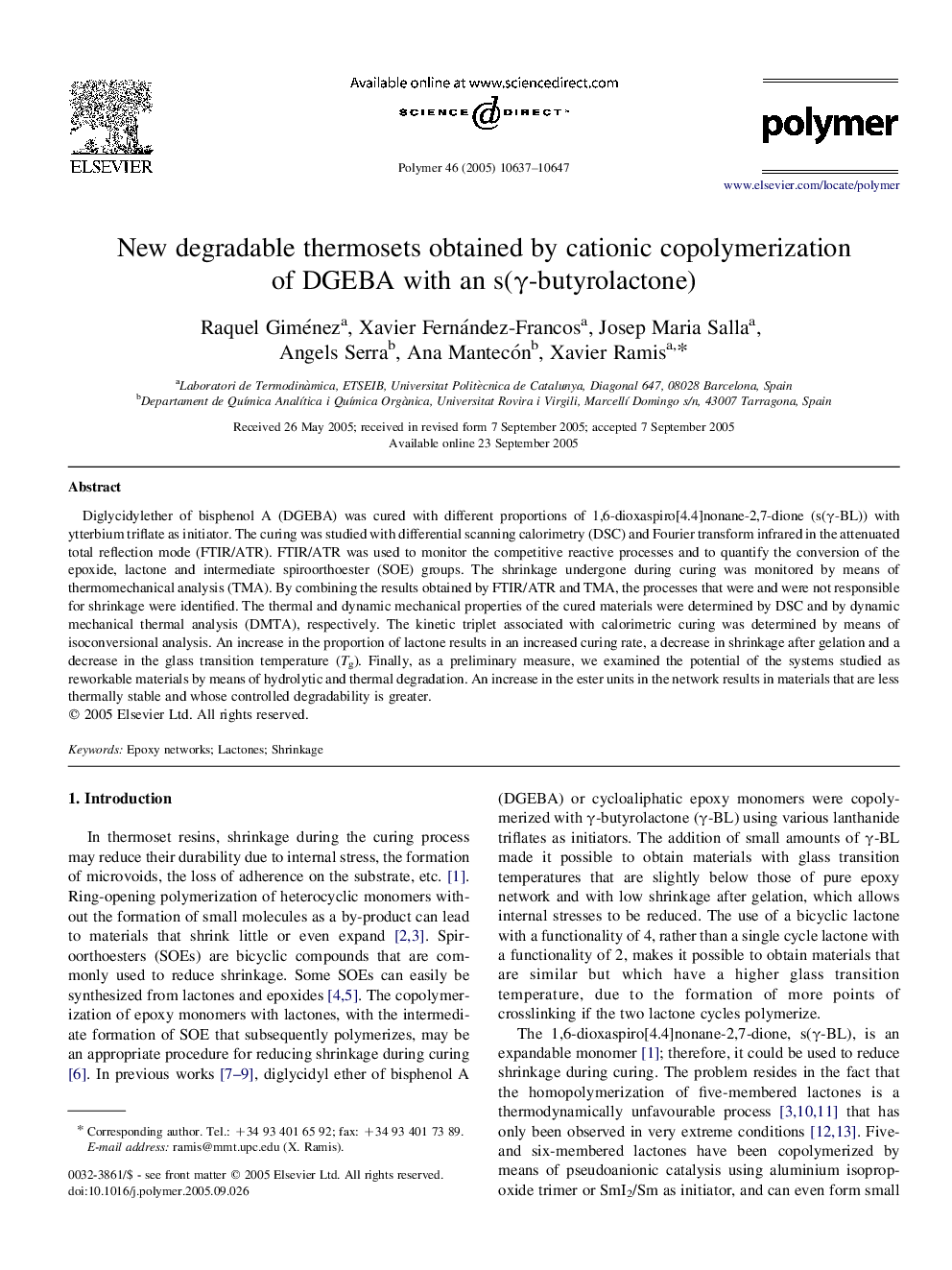| Article ID | Journal | Published Year | Pages | File Type |
|---|---|---|---|---|
| 5186834 | Polymer | 2005 | 11 Pages |
Abstract
Diglycidylether of bisphenol A (DGEBA) was cured with different proportions of 1,6-dioxaspiro[4.4]nonane-2,7-dione (s(γ-BL)) with ytterbium triflate as initiator. The curing was studied with differential scanning calorimetry (DSC) and Fourier transform infrared in the attenuated total reflection mode (FTIR/ATR). FTIR/ATR was used to monitor the competitive reactive processes and to quantify the conversion of the epoxide, lactone and intermediate spiroorthoester (SOE) groups. The shrinkage undergone during curing was monitored by means of thermomechanical analysis (TMA). By combining the results obtained by FTIR/ATR and TMA, the processes that were and were not responsible for shrinkage were identified. The thermal and dynamic mechanical properties of the cured materials were determined by DSC and by dynamic mechanical thermal analysis (DMTA), respectively. The kinetic triplet associated with calorimetric curing was determined by means of isoconversional analysis. An increase in the proportion of lactone results in an increased curing rate, a decrease in shrinkage after gelation and a decrease in the glass transition temperature (Tg). Finally, as a preliminary measure, we examined the potential of the systems studied as reworkable materials by means of hydrolytic and thermal degradation. An increase in the ester units in the network results in materials that are less thermally stable and whose controlled degradability is greater.
Keywords
Related Topics
Physical Sciences and Engineering
Chemistry
Organic Chemistry
Authors
Raquel Giménez, Xavier Fernández-Francos, Josep Maria Salla, Angels Serra, Ana Mantecón, Xavier Ramis,
